Media's role in strengthening China-Russia ties
Editor's Note:
Chinese President Xi Jinping and his Russian counterpart Vladimir Putin announced 2016-2017 as China-Russia Media Exchange Year on May 8, 2015.
Media from both countries carried out exchanges and cooperation in various fields, pushing forward the cultural cooperation between both nations to a higher level. Besides media exchanges, the two nations also cooperate on education, tourism and sports to strengthen people-to-people friendship.
As Chinese Premier Li Keqiang and visiting Russian Prime Minister Dmitry Medvedev wrapped up the China-Russia Media Exchange Year, let's take a look at the highlights of the results of the exchange.
1. FORUMS
China-Russia New Media Forum
Sept 25, 2017
Two hundred businessmen, experts and scholars from China and Russia participated in the second China-Russia New Media Forum. They discussed such topics as the role of the internet in the modern world, the influence of high technology on media, media education, youth entrepreneurship and innovation.
Third China-Russia Media Forum
July 4, 2017

Guo Weimin (left), vice-minister of the State Council Information Office, Huang Kunming (center), executive vice-minister of the CPC Central Committee's Publicity Department, and Alexei Gromov, first deputy chief of staff of the Russian Presidential Executive Office, attend the Third China-Russia Media Forum in Moscow, July 4, 2017. [Photo by Ren Qi/China Daily]
More than 120 representatives of 75 media agencies from China and Russia participated in the Third China-Russia Media Forum and discussed new trends in media development and future cooperation.
China-Russia Internet Media Forum
Oct 28-29, 2016
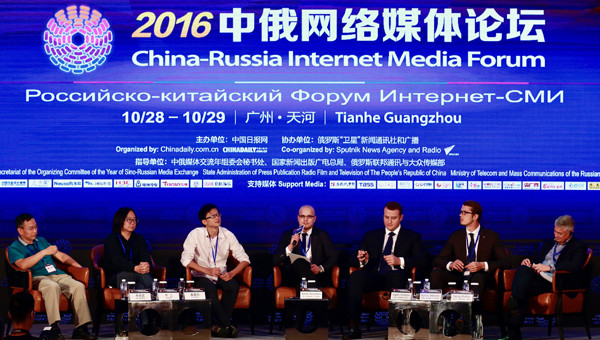
Representatives share their viewpoints at the China-Russia Internet Media Forum in Guangzhou, Guangdong province, Oct 29, 2016. [Photo by Zhu Xingxin/China Daily]
The China-Russia Internet Media Forum brought together more than 150 media representatives, entrepreneurs and researchers from China and Russia, to discuss development and cooperation, innovation and breakthrough opportunities, and challenges faced by online media companies in the two countries.
Second China-Russia Media Forum
March 25, 2016
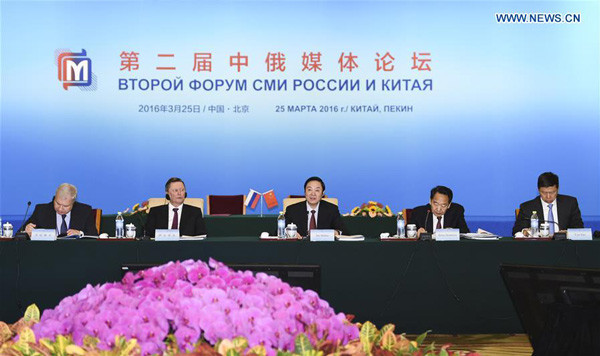
Liu Qibao (C), head of the Publicity Department of the Communist Party of China Central Committee, and Sergei Ivanov, Russia's Presidential Administration chief (2nd L), attend the second China-Russia media forum in Beijing, March 25, 2016. [Photo/Xinhua]
Representatives from China and Russia discussed media's role in promoting the integration of China's Silk Road Economic Belt initiative with the Russia-led Eurasian Economic Union framework, and in boosting new-media exchange and cooperation between the two countries.
2. CO-PRODUCTION PROJECTS

Panda and Kikoriki, an animation series co-produced by CCTV Animation Inc and Russia RIKI Group, is released in Guangzhou, South China's Guangdong province, Sept 12, 2017.

A China and Russia co-produced documentary series, This is China, is broadcast on the RT TV station, CCTV and other media in April this year.
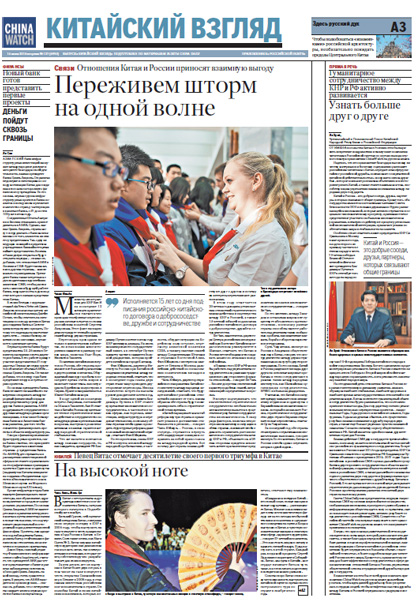
The first issue of China Watch in Russia.
China Daily issued a Russian-language edition of China Watch in Russia, under an agreement made with the leading Russian newspaper Rossiyskaya Gazeta.

The screenshot of the China-Russia Headlines app.
China-Russia Headlines, a bilingual mobile news app produced by China Radio International and Russian news agency Rossiya Segodnya, has started providing news and information about the two nations' ties since July 4.
3. JOINT INTERVIEW
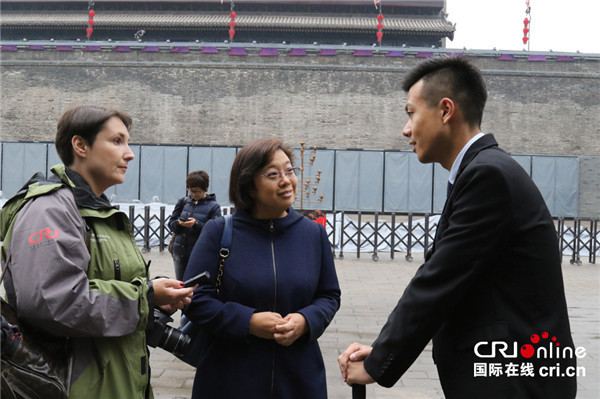
A Russian reporter interviews in front of Xi'an ancient city wall. [Photo/Cri.cn]
More than 30 Chinese and Russian reporters from "China Tour of Chinese and Russian Media Reporting on Silk Road” visited important cities along the Silk Road Economic Belt in Shaanxi and Gansu provinces and Xinjiang Uygur Autonomous Region since Oct 12 to 25 and reported the interconnection of the construction of Belt and Road Initiative and Eurasian Economic Alliance from the perspectives of political unity and trust, economic mutual compliments and benefits, and cultural tolerance and borrowing.
4. EDUCATION, TOURISM AND SPORTS
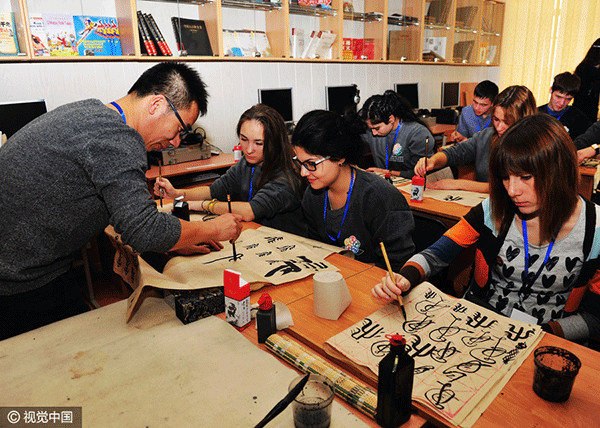
Students of Confucius Institute learn Chinese calligraphy in Russia on October 22, 2013. [Photo/VCG]
Russia has 22 Confucius Institute and more than 200 schools offer a series of Chinese language teaching programs.China has 22 Russian centers and more than 300 schools providing Russian-language teaching programs.

The Trans-Siberian Railway, with a total length of 9,288 kilometers, offers Chinese tourists an alternative way to travel around Russia. [Photo by YAN HAO/CHINA DAILY]
More than one million Chinese tourists visited Russia in 2016, and 1.7 million Russian visitors traveled to China.
"Red Tourism" programs - which visit historical sites associated with early communist activities - are growing in popularity as the two nations work together to foster tourism cooperation.

Players from the Kunlun Red Star and Admiral Vladivostok compete during a KHL game played in LeSport Center, Beijing on Sept 5, 2016. [Photo/VCG]
Kunlun Red Star is the first Chinese team to join the Kontinental Hockey League (KHL).
China and Russia also cooperate on the preparation of 2022 Winter Olympic Games.

